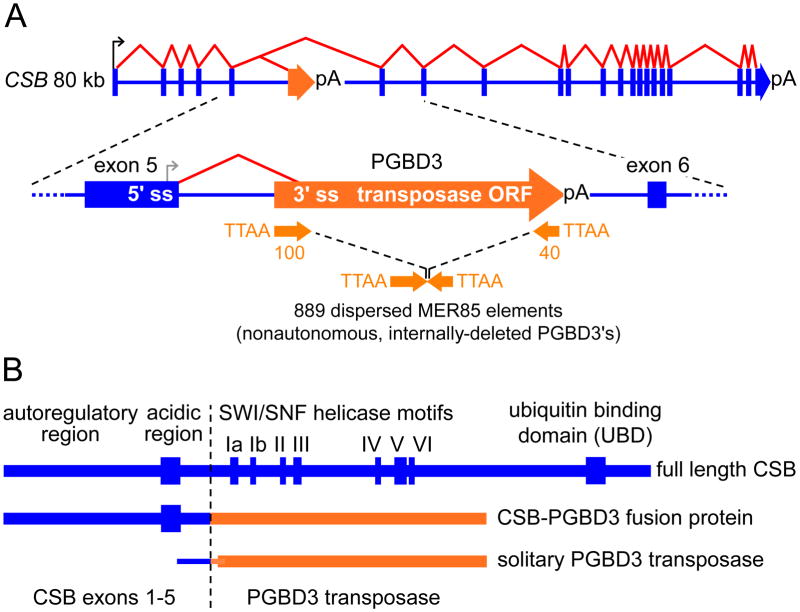Fig. 1. The PGBD3 transposon functions as an alternative 3′ terminal exon, enabling the human CSB gene to generate three proteins instead of one.
Splicing of CSB exons 1–22 generates functional CSB (1493 residues); alternative splicing of CSB exons 1–5 (residues 1–465) to the piggyBac PGBD3 transposase ORF generates the CSB-PGBD3 fusion protein (1061 residues); and transcription driven by a cryptic promoter in exon 5 generates solitary PGBD3 transposase (593 residues). We assume translation of solitary PGBD3 transposase begins at the first methionine in PGBD3 because initiation at the last methionine in CSB exon 5 would noticeably increase the predicted gel mobility from 68 kDa to 80 kDa (Newman et al., 2008). An appropriate balance between normal splicing of the host gene and alternative splicing to the PGBD3 3′ terminal exon is probably maintained in different host gene contexts by synergy between the 3′ splice site and polyadenylation signal (Niwa et al., 1990) that flank the PGBD3 ORF. Note also that all CSB mutations downstream of exon 5, and most compound heterozygous mutations seen in CS, allow synthesis of the CSB-PGBD3 fusion protein in the absence of functional CSB. The 889 MER85s are 140 bp mobile elements that were derived from PGBD3 by internal deletion of the transposase ORF, and subsequently mobilized by a PGBD3 transposase in trans (Gray et al., 2012; Lander et al., 2001). Key: (A) blue lines, boxes, and arrows, CSB DNA; black and gray arrows, CSB and cryptic transcription start sites, respectively; red lines, mRNA splicing; orange arrow, PGBD3 piggyBac element; pA, poly(A) sites; 5′ ss and 3′ ss, donor and acceptor splice sites. (B) heavy blue lines and boxes, CSB protein sequences and motifs; heavy orange line, PGBD3 transposase; light blue and orange lines, 5′ untranslated region. The C-terminal ubiquitin binding domain (UBD) may be part of a quality control mechanism that prevents incision at the site of DNA damage until the TCR-NER complex is correctly assembled (Anindya et al., 2010; Gray and Weiner, 2010). The CSB-PGBD3 fusion protein is also known as CPFP for CSB-piggyBac transposable element derived 3 fusion protein (Horibata et al., 2011). Adapted from Fig. 1 of Gray et al. (2012).

